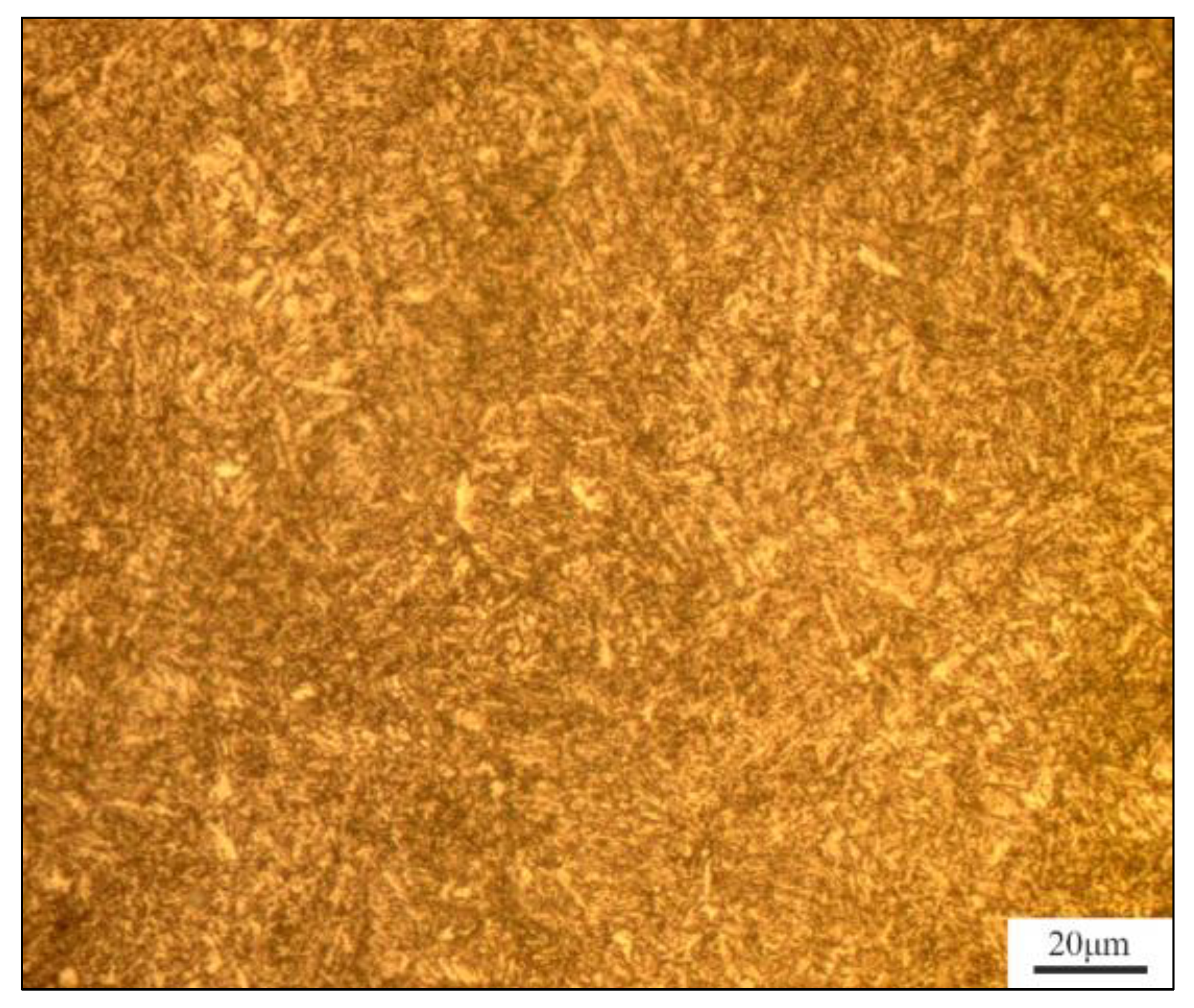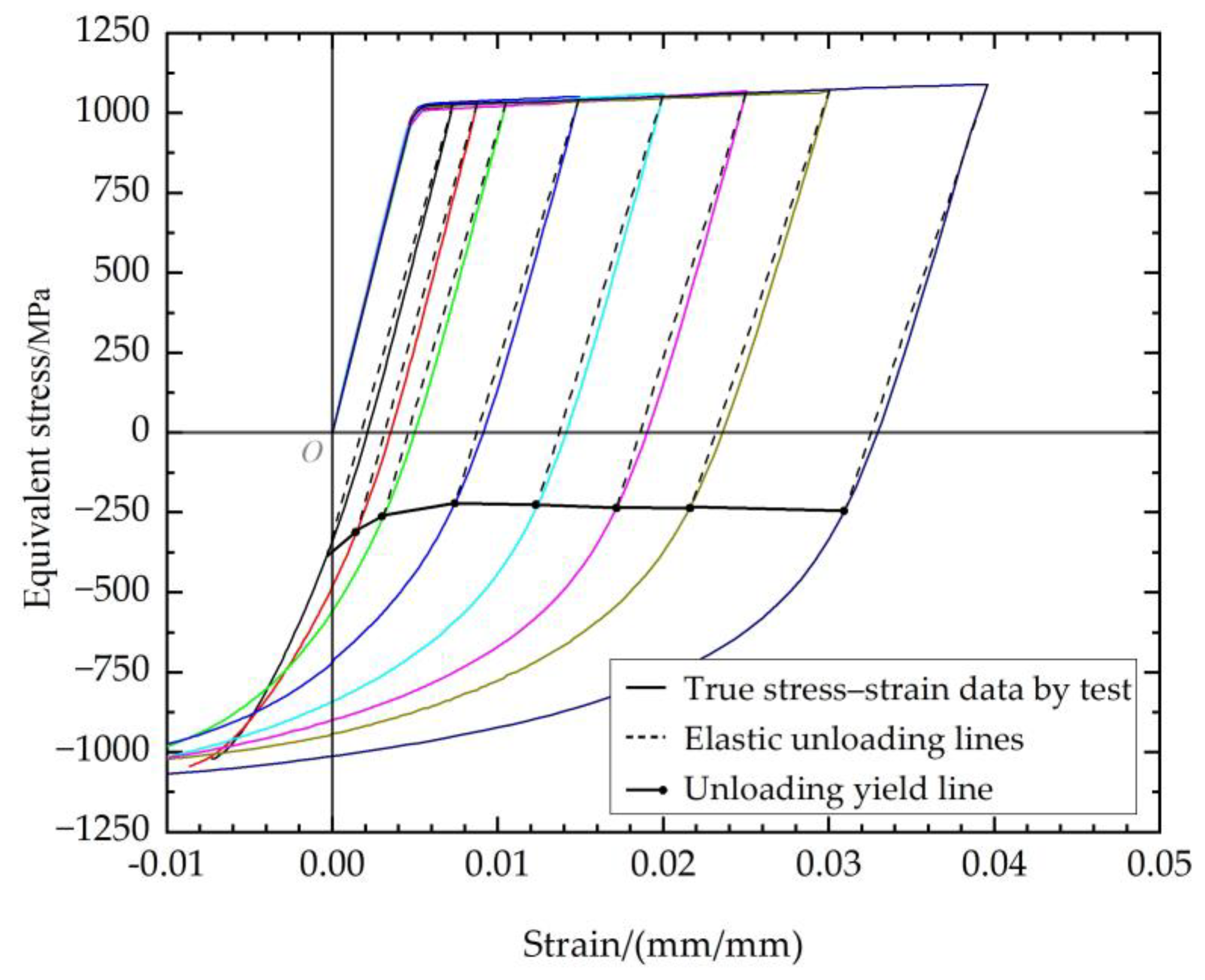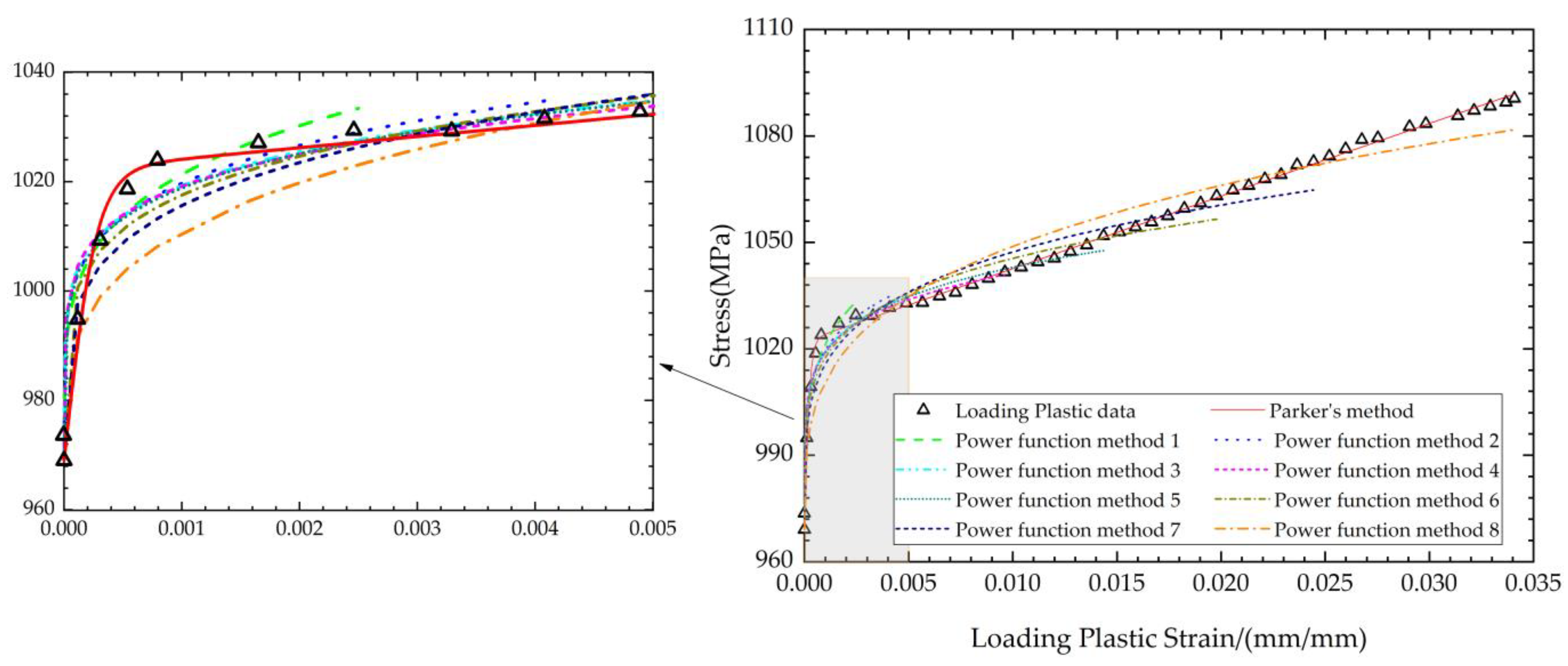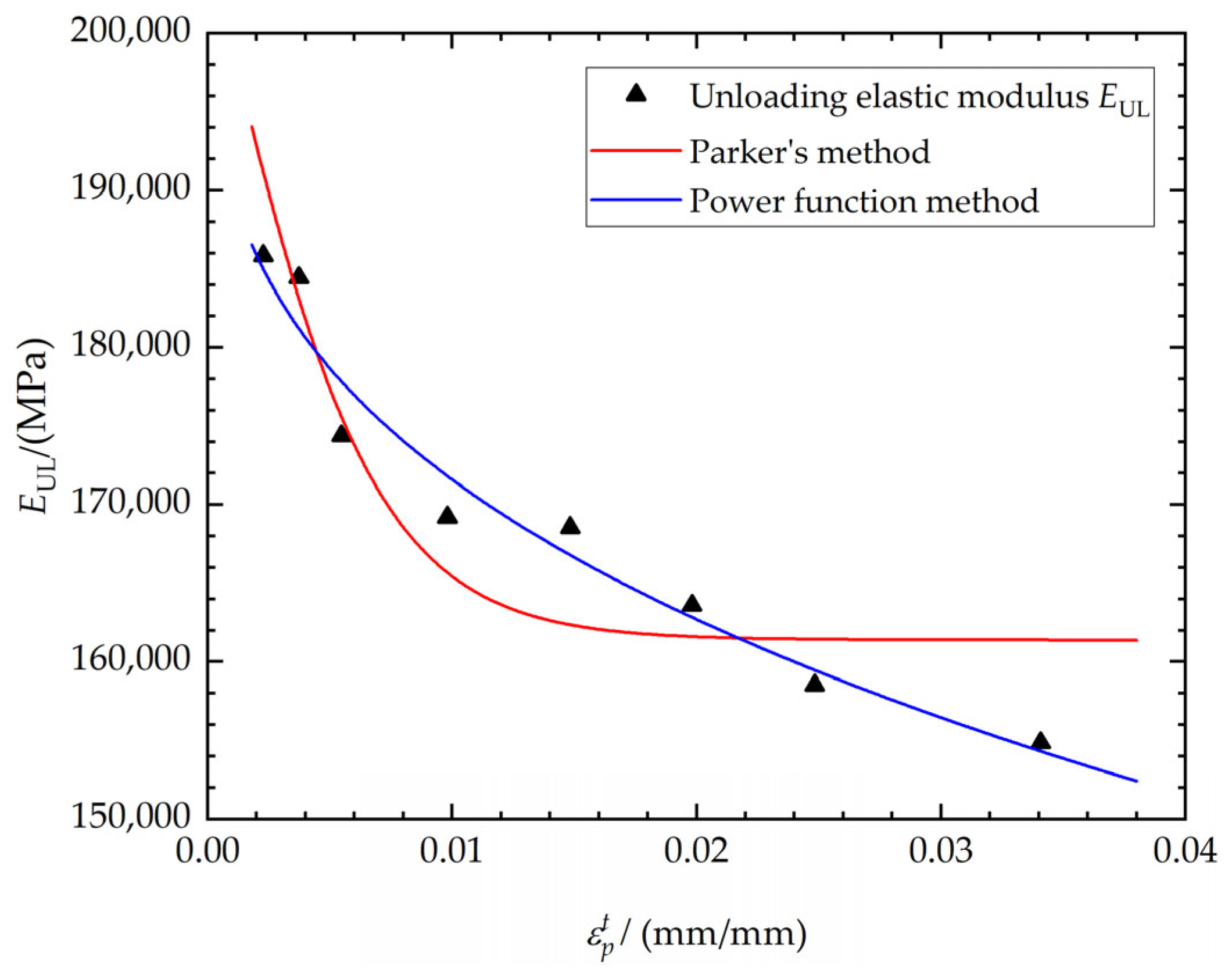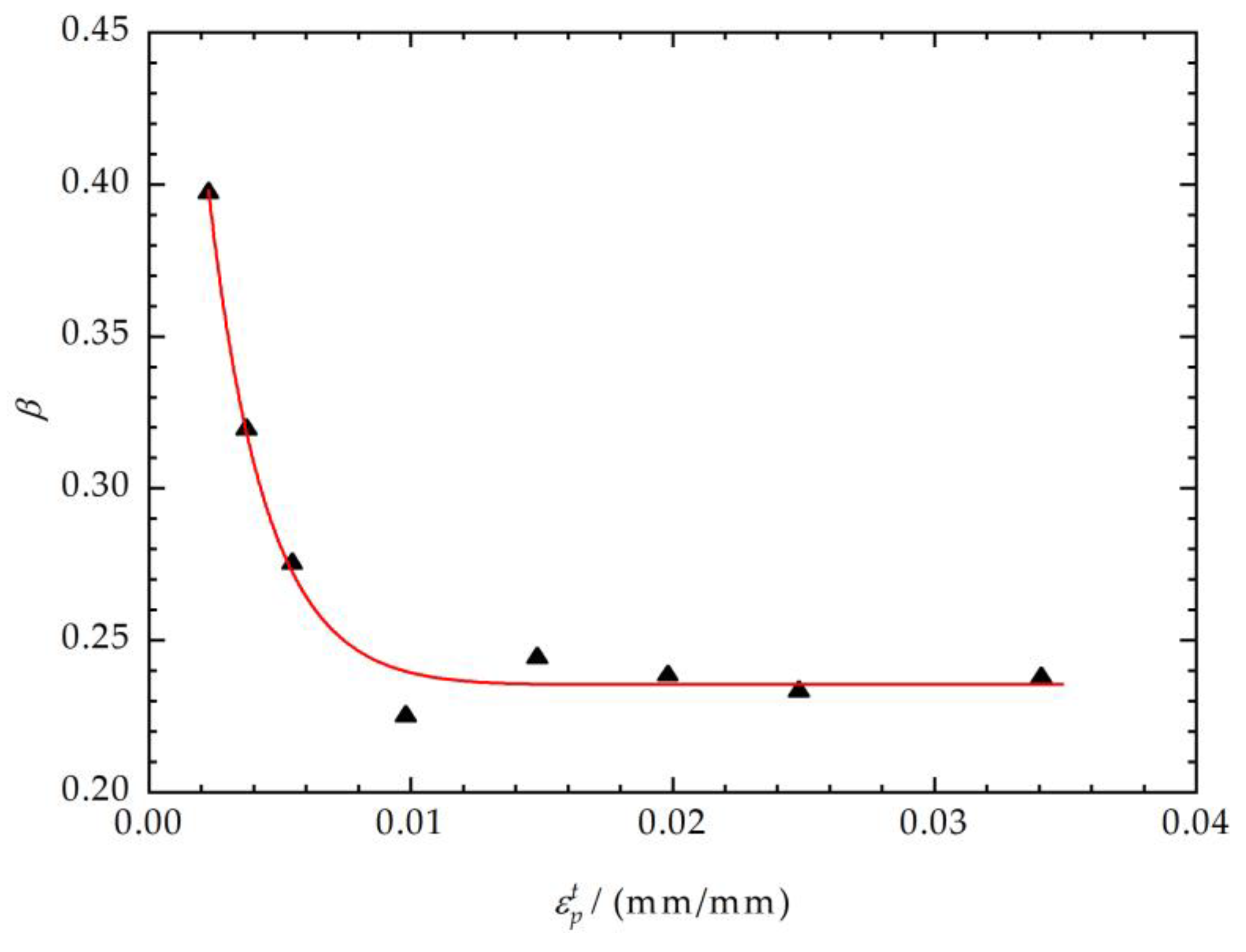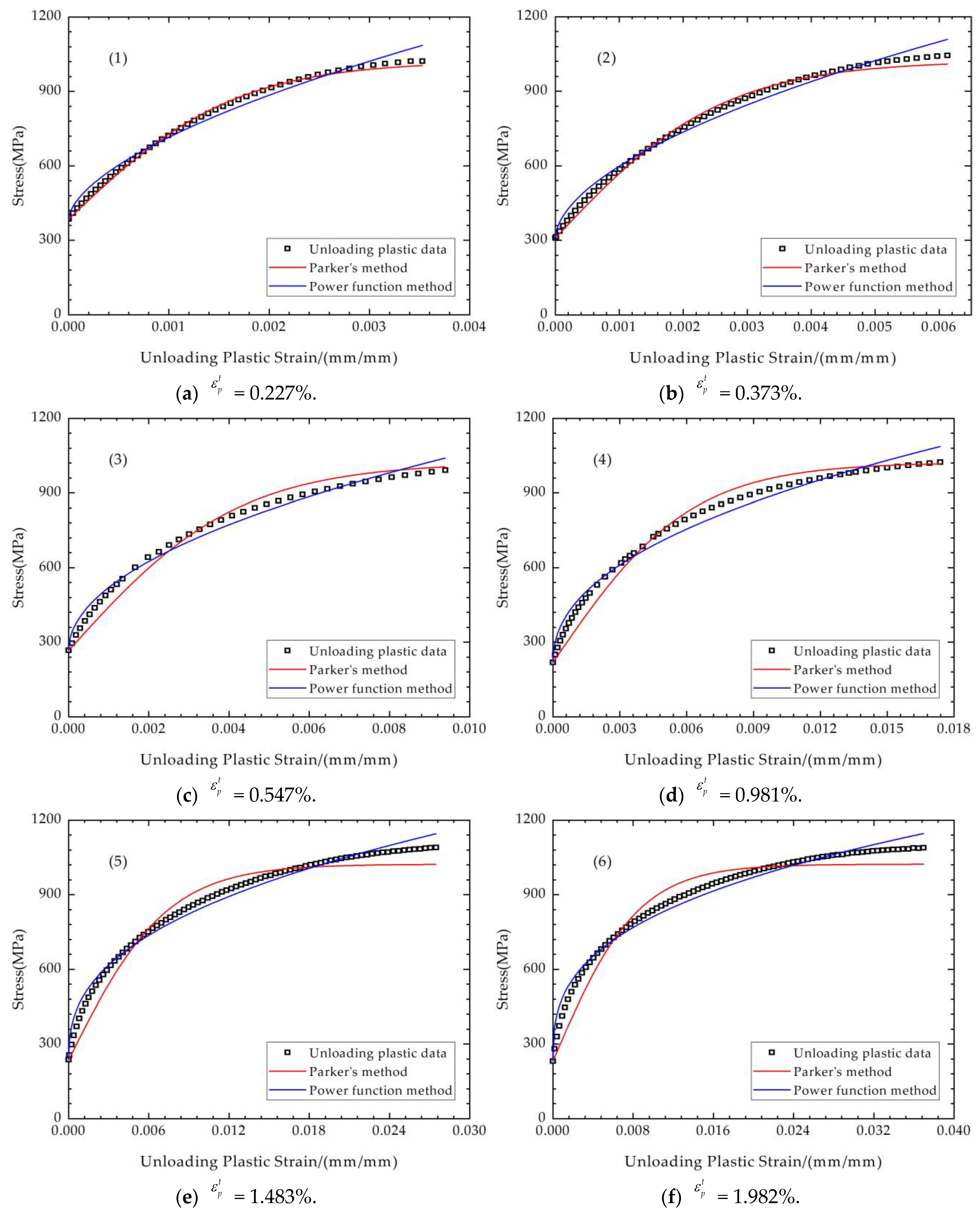The autofrettage of ultra-high pressure thick-walled pressure vessels is widely applied in various fields, such as aerospace, the petrochemical industry, and nuclear energy. The implementation of self-strengthening technology can effectively solve the issue of uneven stress distribution caused by excessive working pressure; additionally, it avoids material consumption and processing difficulties due to excessively thick walls, and it improves the corrosion resistance of the structure. The autofrettage process involves applying internal pressure or another form of deformation load on the inner surface of the thick-walled structure, causing the material near the inner wall to yield. Upon the removal of the load, the elastic zone attempts to revert to its original position, while the plastic zone tends to maintain a permanent deformation state. The elastic contraction of the outer material results in the compression of plastically deformed material in the inner layer. When the container is subjected to a working load, the stress distribution along the wall thickness tends to be uniform [
1,
2,
3,
4]. A variety of processes can be employed to achieve autofrettage, which can be classified as hydraulic autofrettage, molded autofrettage, explosive autofrettage, thermal autofrettage, or rotational autofrettage, depending on the type of forming load [
5,
6,
7]. Hydraulic autofrettage is one of the most traditional and widely employed autofrettage methods [
8,
9]. A substantial corpus of theoretical, finite element calculations and experimental research has been conducted to explicate this method. Sergei Alexandrov [
10] proposed a semi-analytic solution considering the impact of the Bauschinger effect using a material model that accounts for the response of typical high-strength steel, and the results were consistent with numerical solutions. Shim W. S. [
11] accurately predicted the residual stress of SNCM 8 high-strength steel using the Kendall model, where a constant Bauschinger effect factor was used, and the results were compared with those of analytical and finite element analysis. Hakan Çandar [
12] measured radial and hoop residual stresses induced by autofrettage processes using X-ray diffraction methods, along with FEM calculations of 2D axisymmetric analysis. Yanling Ma [
13] quantitatively revealed the residual strain distributions, positions of elastic–plastic juncture and first yielding, etc., of autofrettaged thick-walled pressure vessels using the finite element method, analytical calculations, and neutron diffraction. M. Maleki [
14] evaluated residual stress distributions in autofrettaged homogeneous spherical pressure vessels subjected to different autofrettage pressures.
The Bauschinger effect refers to the phenomenon whereby the yield strength of a metallic material decreases when loaded in the opposite direction, which significantly impacts the effectiveness of the autofrettage process. Due to strain hardening and the Bauschinger effect, most materials do not show ideal elastoplastic characteristics, so the description of the elastoplastic properties of the actual material requires the application of a simplified model, the widely used forms of which are the linear strain hardening model, the power strain hardening model, or a combination of the two. The Bauschinger effect of materials will influence the residual stress on the inner surface after autofrettage, and the residual stress at this position substantially impacts the assessment of autofrettage effects [
15,
16]. Milligan R. V. [
17] quantitatively evaluated the Bauschinger coefficient at different tensile overstrain degrees of modified 4330 steel under different heat treatment states, discovering that the Bauschinger effect decreased with the increase in tensile plasticity, but it remained approximately unchanged after the tensile plasticity reached ~2%. Megahed M. M. [
18] employed a uniaxial tensile–compression test to develop an elastoplastic constitutive model that incorporates the Bauschinger effect of the material. This effect entails an increase in the compressive yield stress in relation to the maximum tensile strain. Additionally, the elastoplastic relationship of the tensile section is simplified to a bilinear model, the compressive plastic modulus is considered to be equivalent to the tensile modulus of elasticity in the model, and the stress–strain relationship of the compressive plastic section at different degrees of maximum tensile strain is also represented by a settled nonlinear relationship. Troiano and Parker A.P. [
19] conducted uniaxial tensile–compressive tests on A723, HY80, and PH 13-8mo, and the corresponding tensile–compression data were provided. Huang X. P. [
20] proposed a generalized autofrettage model that incorporates the strain hardening relationship of the material and the Bauschinger effect based on the actual tensile–strain relationship of 30CrNiMo8. However, the variation in the Bauschinger effect with the change in maximum tensile strain was not taken into account in the calculations, as the tensile–compression relationship of the 30CrNiMo8 material at the approximate maximum tensile strain was adopted. Rolf R. de Swardt [
21] employed a bilinear model to calculate the autofrettage process numerically, in which the variations in the Bauschinger effect and the compressive plastic slope caused by the variation in the maximum tensile strain were considered. However, there was a certain deviation from the actual material compression curve, due to the bilinear simplification. Parker A.P. [
22,
23,
24,
25] proposed a revised kinematic hardening model considering the variation in the Bauschinger effect. The fitting equation form given was suitable for the strain hardening materials tested and was able to accurately describe the elastoplastic mechanical relationships during the loading and unloading processes under different maximum tensile strains. The prediction accuracy of this method was much higher than that of the ideal elastoplastic model. In fact, this kinematic hardening model is a kind of variable material properties method [
26]. E. Troiano [
27] studied the mechanisms of HB7 steels and fitted elastoplastic characteristics similar to those of Parker A.P.’s method. G. H. Farrahi et al. [
28] concluded that an accurate material behavior model plays an important role in estimating the residual stresses of the autofrettage tubes, and a modification of the Chaboche hardening evolution equation was employed to describe the nonlinear characteristics of the material. Troiano E. et al. [
29], Gibson M. C. [
30], and Hu Z. [
31] conducted finite element simulations with various autofrettage modes based on the constitutive elastoplastic material model established by Parker A.P., and the results further validated the accuracy of the methodology. Zhong Hu [
32], based on Parker A.P.’s A723 data and using a data processing method similar to Huang. X. P.’s, conducted numerical simulation research on the extrusion autofrettage process of thick-walled straight lines. Loffredo M. [
33] conducted a set of tensile–compressive tests on AISI 4140 steel, derived a multiaxial elastoplastic model from the combination of nonlinear kinematic hardening and nonlinear isotropic softening, and proposed a fitting method for the model parameters, which was finally implemented in ANSYS software. M. Molaie et al. [
34] employed a more simplified mathematical expression to represent the nonlinearity observed in tensile–compression testing, which is more effective in capturing the elastoplastic curve of materials exhibiting a plastic plateau phenomenon. However, this model is limited in its ability to describe the stress–strain curve of the material under a specific degree of maximum tensile plastic strain. Yan Li [
35] used the ideal elastoplastic model to numerically calculate the autofrettage of high-pressure seamless steel cylinders for hydrogen, the results were used for fatigue life analysis. Shufen [
36] numerically investigated the process of thermally assisted rotational autofrettage of long cylinders with free ends, with the characteristics of the material varying with temperature, where the simplest ideal elastoplastic model was adopted. Zhong Hu [
37] numerically investigated the autofrettage and re-autofrettage of fluid end blocks using a true material model, where more accurate results were obtained compared with the bilinear kinematic hardening material model’s simulation results.
The preceding literature indicates that Parker A.P.’s fitting method, for instance, appears to be the most prevalent and has seen widespread application; however, it is necessary to acknowledge that it still possesses certain limitations. It is challenging to develop a universal equation that can accurately describe the intrinsic tensile–compressive elastoplastic models of different materials, even for materials with similar properties. Consequently, in order to provide a more accurate description of the true stress–strain properties of a specific material, it is necessary to conduct experimental and numerical studies on their elastoplastic constitutive relationships. This study aimed to develop a revised kinematic hardening model composed of a group of equations that can be used to accurately describe the elastoplastic mechanical properties of 35CrNi3MoVR, which is a kind of steel used for ultra-high pressure vessels. A group of uniaxial mechanical property tests were carried out to determine the stress–strain relationship of the material during the process of loading and unloading. After that, a group of equations were used to fit the elastoplastic testing data. The logic used for the finite element method calculation describing the process from loading to unloading is provided here, and the FEM method is used first for checking the fitting functions and then for simulating the autofrettage process. Autofrettage experiments were performed, and the measured stresses were compared to the FEM results calculated using a series of models, in order to further identify the accuracy of the fitting functions.
